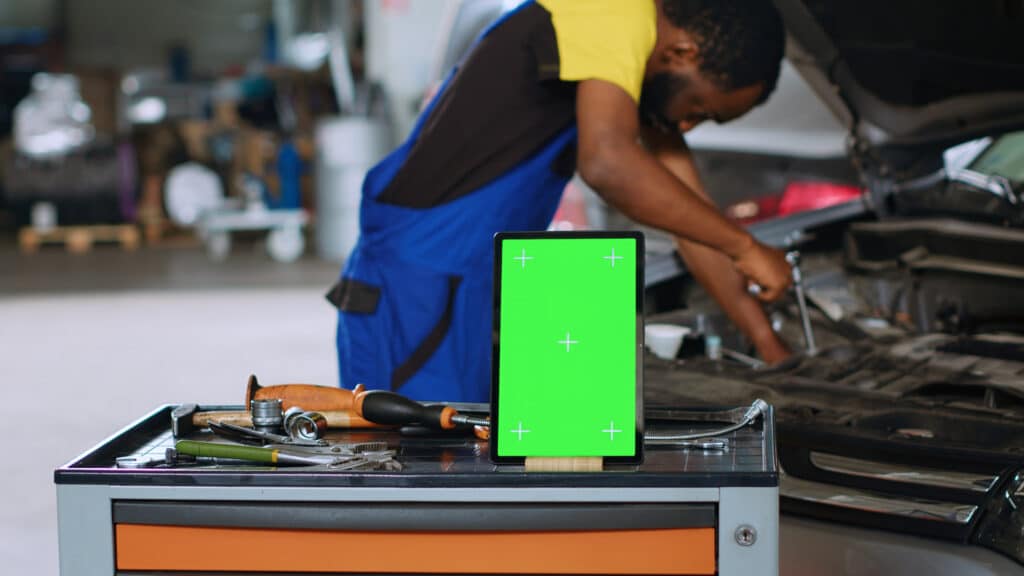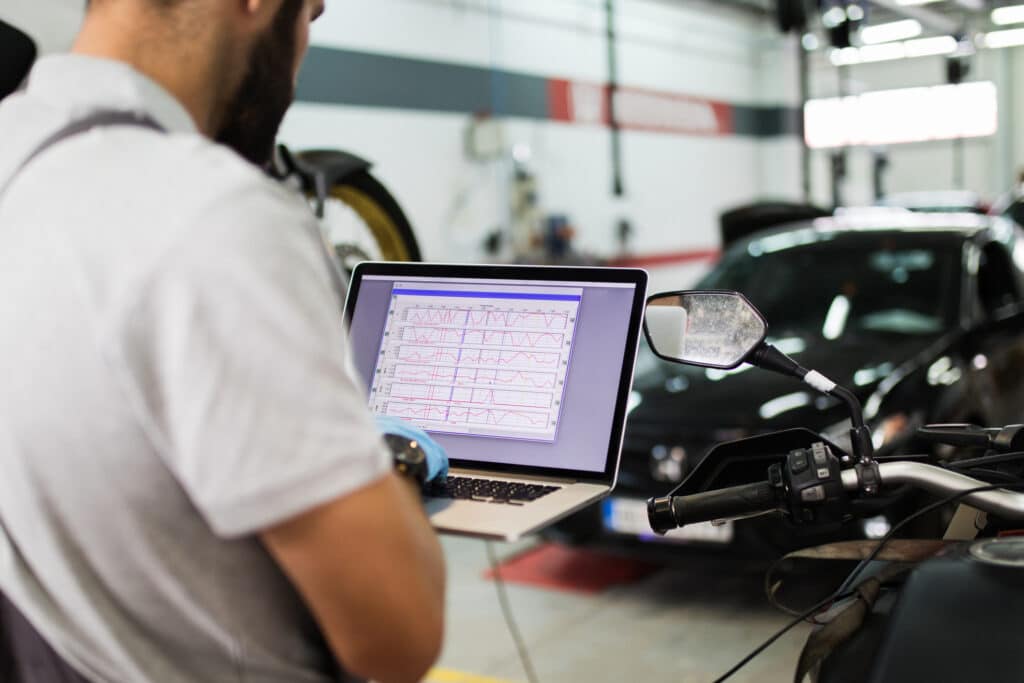What is Auto Body / Collision Repair Software?
Collision repair software provides professionals in the automotive repair industry with the necessary tools to deliver excellent service while focusing on what they’re best at – automotive repairs. Therefore, selecting the right auto repair software is a crucial decision that requires you to consider the business’s and your customers’ needs. Whether you’re determined to boost profits, improve how your finances are handled or create more efficient customer relationship management, this software could be the answer you’re looking for.
In this guide, we’ll cover the fundamentals of collision repair software and explain how it can be beneficial, alongside discussing everything you should consider before making your choice.
What is collision repair software?
Collision repair software was designed to revolutionise accuracy and efficiency within body shops. But how does it achieve this? The software can be implemented across all your day-to-day operations, including costing, ordering, invoicing, CRM and many more features. As a result, your team can view accurate job timeline estimates, avoid costly surprises in supplies and materials, and provide automated accounting and invoicing. What’s more, the software is constantly evolving based on the needs and wants of body shops.
What can collision repair software help with?
Collision repair software can play a huge role in increasing your business’s profitability alongside helping you gain a competitive edge. Ready to find out how? From job costing and managing timelines to ordering parts and inventory tracking, here are a few of the main features available with collision repair software.
Job costing
Collision repair software can be beneficial for calculating the cost of various jobs while factoring in everything from labour costs to the price of parts and materials. It helps with accurately pricing services for customers and understanding potential expenses to avoid any surprises.
The software uses data from previous jobs and past orders to determine quotes and final costs for customers, which can build trust with customers since it’s easier to gain clarity on why services are being priced in a certain way.

Managing job timelines
Struggling to juggle job timelines and accurately estimate how long you’ll have a customer’s vehicle in your body shop? Collision repair software offers tracking and scheduling based on data from previous jobs which allows your team to gain better visibility over everything that’s going on, regardless of how busy they are. This helps make sure each task is completed within agreed timeframes, and customers can even be notified in real-time when progress is made on their vehicle.
Ordering & inventory tracking
Ordering new tools, materials and parts can be a tedious job, not to mention keeping track of these all once they arrive. But with this software, your team can benefit from automated tracking for your entire supply chain and inventory store. So, when you’re running low on the things that you need, such as automotive paint and sanding discs, the system will automatically recognise that these need to be reordered and notify you of this. Many types of collision repair software can take data from your previous jobs to work out how often you’re using and ordering certain supplies, tools and materials, which means that you’re far less likely to run out and need extra time to complete these jobs.
Invoicing & accounting
Invoicing and accounting can be time-consuming when these tasks are handled manually, and this can take away valuable resources if you don’t have staff dedicated to covering these. Instead, collision repair software can take care of the finances and create accurate, detailed invoices that can be sent straight to customers. This can help your body shop appear more attractive to customers since it can increase transparency. Not only this, but it can also free up valuable resources and allow your team to complete jobs quicker since they can leave the finances with this technology.
CRM
Auto body repair software can also offer an integrated Customer Relationship Management (CRM) system capable of tracking customer appointments and scheduling timely notifications and updates. This feature can help ensure that all customer requests are processed within a reasonable timeframe so that they are never left waiting.
Reporting & analytics

It’s likely that you’re already collecting data on your customers every day. So, why not use this data to measure your efficiency and gain valuable insights into your success? Reporting and analytics built into your collision repair software can help you measure the performance of every aspect of your body shop. With a single dashboard providing a fully customised review of all your data, your team can check profit margins, evaluate performance and efficiency during particular periods and find out where there might be room for improvement.
Things to keep in mind when considering auto repair software
So, what else do you need to consider when you’re looking into auto repair software? From the costs involved to the features that will prove to be most useful for your business, here’s everything you should think about before taking the plunge into this investment.
Software cost
It’s no secret that software can be costly, especially in the initial set-up stages. So, not only do you need to carefully consider whether this is a worthwhile investment for your business, but you also need to weigh up whether the benefits will outweigh the set-up and maintenance costs.
Features required for your shop
It goes without saying that if you’re planning on investing your hard-earned cash into auto body repair software, the features it offers must meet your needs. For example, if ordering, invoicing and inventory management are areas you feel that your business is lacking, then you’ll need to ensure the software can offer significant improvements that work for you. If you’re clear on the features your body shop requires, you can speak to software providers with better clarity about your needs and wants to help you decide what’s right.
Shop size and number of locations
Planning to expand into new locations? Or are you looking to increase the size of your body shop in the future? Either way, it’s important to choose scalable auto repair software capable of growing alongside your business. Important features to look out for might include a cloud-based system, mobile-friendly interface, customisable end-user options, centralised data, and comprehensive reporting and analysis functions. Before selecting software, be sure to ask potential providers about its scalability and the features they can offer to help with business growth in the future.
Current business inefficiencies
Where do your current inefficiencies lie? Running a successful automotive repair shop requires your team to keep a close eye on areas where there could be room for improvement. Once you have a better understanding of the things you could do to boost your success, it can be much easier to target these using your software.
Team training
When you introduce new software to your business, it’s essential to train your team on how to use it effectively. Neglecting to organise and manage this training could result in the software being underutilised, rather than serving its intended purpose and optimising efficiency in your body shop. If this happens, you might struggle to achieve buy-in, which can ultimately leave you with expensive software that isn’t being used to its full potential.
Therefore, it’s important to consider scheduling team training sessions either after the implementation or during it to get your team involved early and make sure they’re comfortable using the software. While it may initially appear to be a drain on time and resources, investing in training your team on how the software functions and its daily application can enhance overall efficiency and ensure the smooth operation of your body shop in the long run.
Whether you’re deliberating over the investment into collision repair software or just want to maximise the auto body repair software you already have, we hope this guide has provided some useful insights. Looking for more tips and advice for your body shop? Our blog is regularly updated with advice guides and top tips for those in the automotive industry, so be sure to check it out here.


